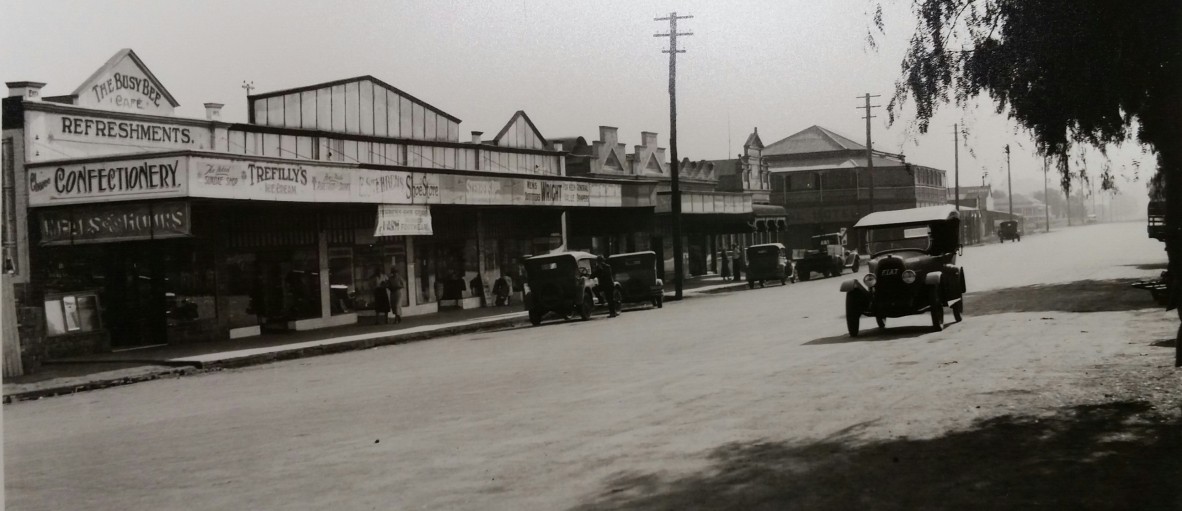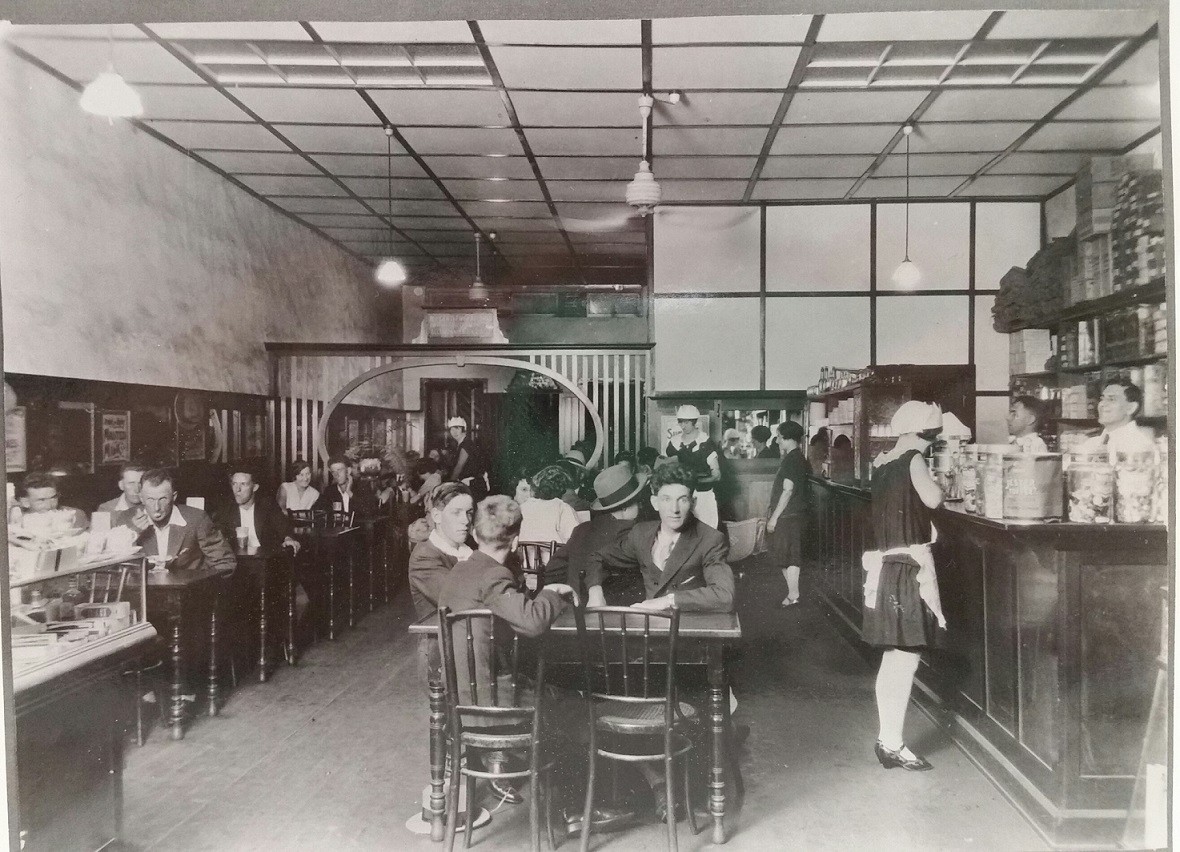On the fourth floor of State Library we’re working towards an exhibition about Greek cafés. These shops, run by Greek migrants from the early twentieth century, were the heart of regional towns across the state. Hunting though boxes at the John Oxley Library in the quest for café stories never fails to turn up something of interest. A photograph in the Kingaroy box shows the Busy Bee Café in Haly Street in 1935.

Busy Bee Café, Kingaroy. John Oxley Library, State Library of Queensland. Neg 199662
The word REFRESHMENTS positioned below the café name was well known to locals and travellers alike. Refreshment rooms, like tearooms, offered hot beverages, cakes, sandwiches and light meals. Timber furniture—often bentwood chairs—white tablecloths and napkins set the scene for Devonshire tea and assorted sandwiches.
In the centre of the front awning is the word TREFILLY’S. Australians were intolerant of migrant names so proprietors often Anglicised them. The café family known as Londy in Ipswich, Bundaberg and Toowoomba derives from Leondarakis, for example. George Trifilis and Emmanuel Fardoulys were proprietors of the Busy Bee Café.
Other signage on the awning is synonymous with Greek cafés: SUNDAE SHOP, ICE CREAM and PURE FRUIT DRINKS. The Busy Bee offered sundaes with exotic names like South Burnett Beauty, Royal Beauty and American Beauty. Ice cream was used in these and other desserts, and in soda drinks, and was likely made on the premises. George had worked for Mr Simos in the Paragon Café in Katoomba and had there learned the art of making syrups for sundaes and sodas. Fruit drinks made on the premises from fresh fruit, and served icy-cold from the milk bar, must have been a treat in the days before most Queenslanders had refrigeration.
On the side awning CHOICE CONFECTIONERY points to a major sideline for Greek cafés. George and Emmanuel made confectionery using methods a fellow Greek had learned in America. Prior to the advent of supermarkets and pre-packaging, Queenslanders bought confectionery, drinks and iced confectionery from the local Greek café, and many had extensive lolly counters lined with glass jars. Below this sign are the words MEALS AT ALL HOURS. Greeks routinely opened beyond 11 pm but it was not uncommon for travellers to wake them up if they’d gone to bed when they hit town.
The Busy Bee Café is no longer Greek-owned, and the building has been modernised, but photographs on the walls at the rear of the shop show the cafe as it was in the 1920s. One depicts a beautiful leadlight façade and, across the door stoop, BUSY BEE CAFÉ written in black and white mosaic tiles. This is still there today. Another shows the peculiar way in which waitresses wore their aprons in the 1920s, when dropped waistlines were all the rage, and girls tied apron strings around their hips. This placed the round bib right on their stomachs.

Interior of the Busy Bee Café. John Oxley Library, State Library of Queensland. Neg 105119
Also in the John Oxley collection is an exquisite photograph of the café interior taken in 1929 by Chas. Hill. George stands behind the counter. He married Matina Economos in Rockhampton in 1925. Their reception took place in Economos Brothers Café. Perhaps the woman with a wicker pram is Matina.
The Busy Bee in Kingaroy is one of the few Greek cafés still in operation in Queensland. Do you know of any others? We’d love to hear from you.
References
- Denis A. Conomos, The Greeks in Queensland: a history from 1859-1945 (page 291-92).
Further reading
Comments
Your email address will not be published.
We welcome relevant, respectful comments.